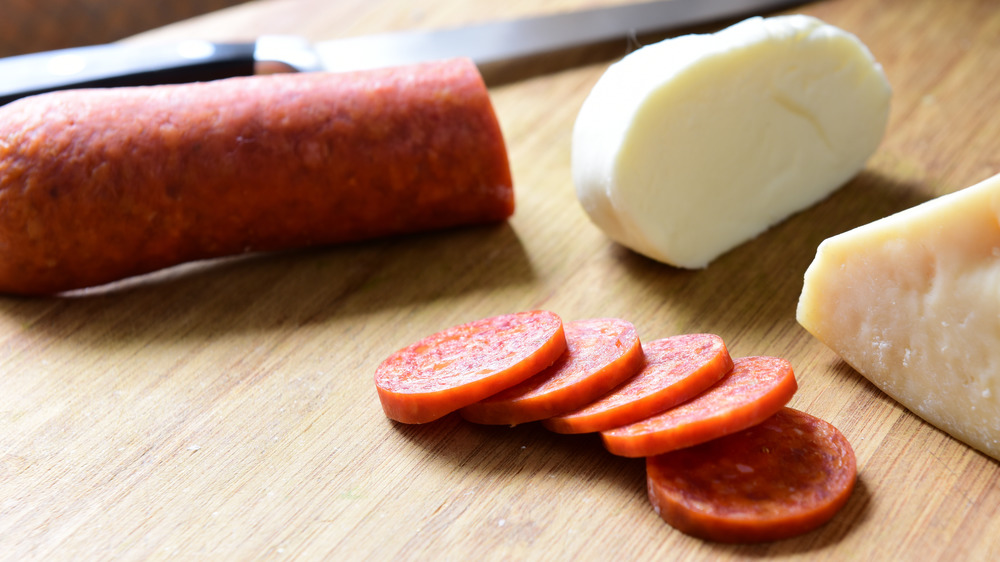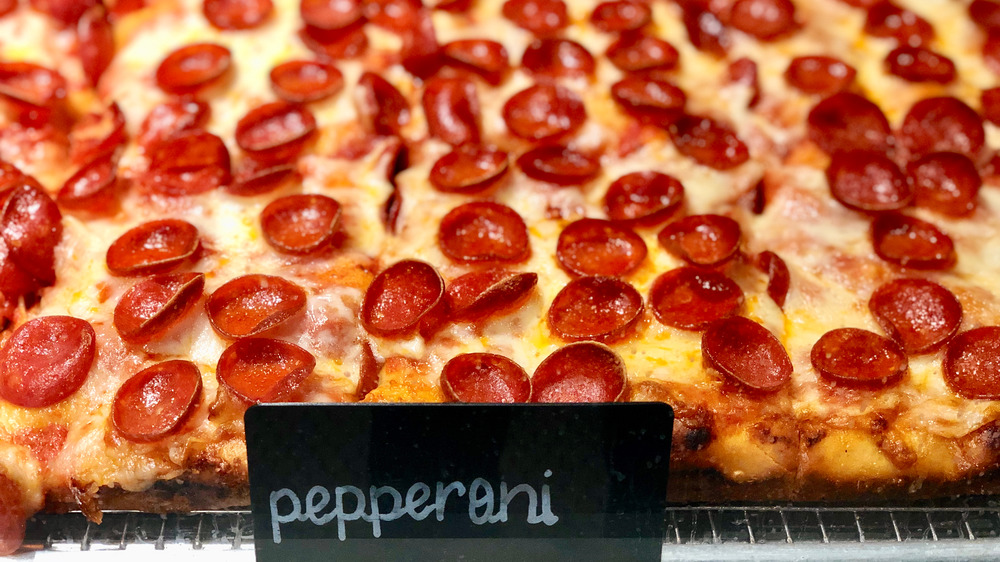Details You Didn't Know About Pepperoni
It turns out you can thank Americans for pepperoni, Italian Americans to be exact. Pepperoni was invented when a wave of Italian immigrants settled in America in the early 20th century. The newcomers had to alter their beloved recipes based on the ingredients that were now accessible and affordable in their new country. In Italy, salami was made entirely of pork, but in America (luckily for us), pork was blended with beef to create pepperoni (via Chowhound).
But the differences between salami and pepperoni don't stop there. Making pepperoni involves putting in paprika and chili pepper, while salami often calls for garlic and wine. Also, pepperoni is made from finely ground meat, while salami comes from slightly coarser ground meat. From there, salami and pepperoni take on a similar path, both are dried between several days and several weeks. But, the fine grind of the meat helps the pepperoni retain its shape in high heat, making it the ultimate pizza topping.
But, be careful when ordering a pepperoni pizza in Italy! According to ThoughtCo, "pepperoni" actually comes from the Italian word "peperone," which means "pepper" as in green or red bell peppers. So, in order to avoid getting a pizza covered simply in peppers, your best bet might be to order a pizza with salame or salamino picante, a spicy Italian cured meat.
Not all pepperonis are created equal
There are the "lay flat" pepperonis that keep their shape when heated at high temperatures, and then there are the heroes of the pepperoni world: the cup and char. These pepperonis curl up to create otherworldly, foodie daydream-inducing, salty, meat cups with charred edges. According to Chowhound, fans of cup and chars lustfully refer to them as "grease chalices" for the way they retain little ponds of greasy goodness. A quick scan of Instagram for #ronicups is sure to send any pepperoni fan straight to the nearest pizza joint for a meaty slice of pie.
In addition to being enticing, roni cups have also been intriguing. What, exactly, makes pepperonis curl? Determined to get to the bottom of the Case of the Curling Pepperoni, Serious Eats ran a number of experiments cooking pepperoni. The trials looked at casings, thickness, moistness, and heat source direction, ultimately coming to the final conclusion: "For the cup-iest pepperoni, get natural casing, and slice it medium-thick." Now, that's some advice we can sink our teeth into.

